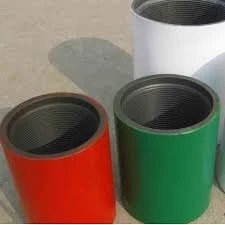- Afrikaans
- Albanian
- Amharic
- Arabic
- Armenian
- Azerbaijani
- Basque
- Belarusian
- Bengali
- Bosnian
- Bulgarian
- Catalan
- Cebuano
- Corsican
- Croatian
- Czech
- Danish
- Dutch
- English
- Esperanto
- Estonian
- Finnish
- French
- Frisian
- Galician
- Georgian
- German
- Greek
- Gujarati
- Haitian Creole
- hausa
- hawaiian
- Hebrew
- Hindi
- Miao
- Hungarian
- Icelandic
- igbo
- Indonesian
- irish
- Italian
- Japanese
- Javanese
- Kannada
- kazakh
- Khmer
- Rwandese
- Korean
- Kurdish
- Kyrgyz
- Lao
- Latin
- Latvian
- Lithuanian
- Luxembourgish
- Macedonian
- Malgashi
- Malay
- Malayalam
- Maltese
- Maori
- Marathi
- Mongolian
- Myanmar
- Nepali
- Norwegian
- Norwegian
- Occitan
- Pashto
- Persian
- Polish
- Portuguese
- Punjabi
- Romanian
- Russian
- Samoan
- Scottish Gaelic
- Serbian
- Sesotho
- Shona
- Sindhi
- Sinhala
- Slovak
- Slovenian
- Somali
- Spanish
- Sundanese
- Swahili
- Swedish
- Tagalog
- Tajik
- Tamil
- Tatar
- Telugu
- Thai
- Turkish
- Turkmen
- Ukrainian
- Urdu
- Uighur
- Uzbek
- Vietnamese
- Welsh
- Bantu
- Yiddish
- Yoruba
- Zulu
casing pup joint
Understanding Casing Pup Joints in Oil and Gas Operations
Casing pup joints are essential components in the oil and gas industry, particularly in drilling and production operations. These specialized pieces of pipe serve unique functions that are vital to the efficient and safe transportation of hydrocarbons from the wellbore to the surface. In this article, we will delve into the importance, design, and applications of casing pup joints, as well as their role in enhancing operational safety and efficiency.
What Are Casing Pup Joints?
Casing pup joints are short sections of casing or tubing, typically ranging from 2 to 12 feet in length, used to make up specific lengths of string during production operations. They are designed to connect two longer lengths of casing or to adjust the depth of casing strings in the wellbore. Although they may seem like minor components compared to the larger sections of casing, pup joints play a critical role in the overall integrity of a well.
Design and Material Specifications
Casing pup joints are manufactured to the same specifications as regular casing pipes. They are primarily made from carbon steel or alloy steel to withstand the harsh conditions encountered in oil and gas environments, such as high pressures and corrosive fluids. Pup joints follow strict standards set by organizations like the American Petroleum Institute (API) and are classified based on their grade and weight. The design can also feature additional properties, such as threading or coupling options that allow for easy connection to existing casing strings.
The versatility of casing pup joints comes from their ability to be customized. Operators can select the appropriate length and diameter based on specific well requirements. Additionally, they can be further equipped with centralizers or other accessories that help in maintaining the position of the casing in the wellbore and optimizing the flow of fluids.
Applications of Casing Pup Joints
casing pup joint

Casing pup joints have various applications in drilling and production operations. One primary use is to facilitate the adjustment of casing strings. During the drilling process, certain sections of the well may require modifications for various reasons, such as accommodating different geological formations or achieving optimal pressure control. Pup joints make these adjustments easier and allow for better overall well management.
Another critical application is enhancing cementing operations. Casing pup joints can serve as spacers that help prevent cement from flowing into unwanted areas during the cementing process, thereby ensuring that the annular space between the casing and the wellbore is accurately filled. This is crucial for preventing reservoir fluids from invading the well, protecting the integrity of the casing, and ensuring effective zonal isolation.
Safety and Efficiency
The effectiveness and reliability of casing pup joints significantly contribute to the safety and efficiency of oil and gas operations. By facilitating optimal casing alignment and providing necessary adjustments, these joints help maintain pressure integrity within the well, minimizing the risk of blowouts or leaks.
Moreover, in environments where space is limited, or where pivoting and maneuvering large sections of casing can be challenging, casing pup joints offer a practical solution. Their shorter lengths not only save space but also simplify transportation and handling during installation, contributing to reduced operational downtime.
Conclusion
Casing pup joints may be small in size, but their impact on oil and gas operations is substantial. Serving various purposes, from adjusting casing lengths to optimizing cementing processes, they are indispensable components that enhance the overall efficiency and safety of drilling and production activities. As technology advances and the demands of the industry evolve, the design and application of casing pup joints will likely continue to adapt, ensuring that they meet the challenges of modern drilling operations. Whether one is involved in designing new wells or managing existing ones, understanding casing pup joints is crucial for effective and safe oil and gas production.
-
Tubing Pup Joints: Essential Components for Oil and Gas OperationsNewsJul.10,2025
-
Pup Joints: Essential Components for Reliable Drilling OperationsNewsJul.10,2025
-
Pipe Couplings: Connecting Your World EfficientlyNewsJul.10,2025
-
Mastering Oilfield Operations with Quality Tubing and CasingNewsJul.10,2025
-
High-Quality Casing Couplings for Every NeedNewsJul.10,2025
-
Boost Your Drilling Efficiency with Premium Crossover Tools & Seating NipplesNewsJul.10,2025







